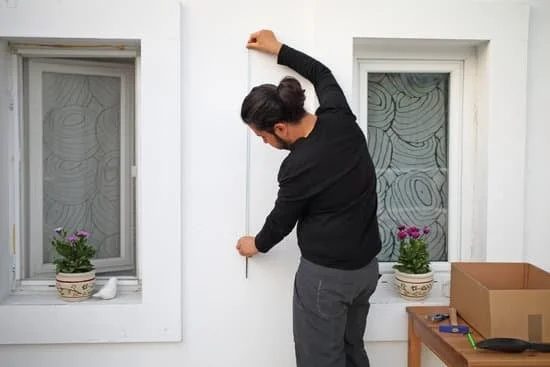Are you frustrated with slow internet and buffering in your home? If so, you’re not alone. Many people struggle with weak internet signal, but there are ways to improve it. In this article, we will explore how to improve internet signal in your home. From assessing your current setup to optimizing your Wi-Fi network settings, we’ll cover everything you need to know to enhance your internet experience.
Weak internet signal can be caused by various factors, including the location of your router, interference from other devices, and the quality of your equipment. Understanding these challenges is the first step towards improving your internet signal. By identifying the root cause of the problem, you can take targeted steps to boost your signal strength and increase coverage throughout your home.
Assessing your current internet setup is crucial for identifying areas that may be contributing to weak signal. From the type of router you have to its placement in your home, there are several factors to consider when evaluating your setup. By understanding the strengths and weaknesses of your current configuration, you can make informed decisions about how to improve your internet signal.
Assessing Your Current Internet Setup
When experiencing weak internet signal in your home, it is crucial to evaluate your current internet setup to identify potential issues and areas for improvement. This step is essential in order to effectively address the challenges of poor internet connectivity.
Check Your Internet Speed
Begin by checking your internet speed using an online speed test tool. This will provide you with valuable information about the actual performance of your internet connection. If the results show a significantly lower speed than what you are paying for, this could indicate a problem with your service provider or equipment.
Inspect Your Router
Inspect your router to ensure that it is functioning properly and is capable of meeting your internet needs. Check for any physical damage, outdated firmware, or limited capabilities that could be contributing to the weak signal.
Consider Your Internet Plan
Review your current internet plan to determine if it adequately meets the demands of your household. If you have multiple devices connected at once or engage in activities that require high bandwidth, such as streaming or gaming, you may need to consider upgrading your plan for improved performance.
By taking the time to assess your current internet setup, you can gain valuable insights into the potential causes of weak signal and make informed decisions about how to enhance the overall connectivity in your home.
Choosing the Best Location for Your Router
Understanding the challenges of weak internet signal is the first step towards improving the situation. Factors such as distance from the router, physical obstructions, and interference from other devices can all contribute to a weak signal. By understanding these challenges, you can better address them when choosing the best location for your router.
When assessing your current internet setup, it’s essential to consider where the main areas of internet activity are in your home. If these areas are far away from the router, you may need to strategically place the router in a more centralized location for better coverage throughout the house. Additionally, taking note of any physical obstacles that could be blocking the signal, such as walls or large furniture, will also help in determining an optimal location for the router.
Once you’ve assessed your current setup and potential obstacles to a strong internet signal, it’s time to choose the best location for your router. Ideally, this would be a central location in your home that is free from physical barriers. Placing the router at an elevated position and away from other wireless devices and electronic appliances can also help optimize its performance.
| Tip | Details |
|---|---|
| Elevated Placement | Place your router in an elevated position for better signal distribution. |
| Away from Interference | Avoid placing the router near other wireless devices and electronic appliances that can cause interference. |
| Central Location | Choose a central location in your home for optimal coverage. |
Upgrading Your Router for Better Performance
When it comes to improving your home internet signal, one of the most effective steps you can take is upgrading your router. A new, more advanced router can significantly improve the performance and coverage of your Wi-Fi network. Here are some important things to consider when upgrading your router:
- Assess your current router’s capabilities: Before purchasing a new router, it’s important to assess the capabilities of your current device. Consider factors such as its wireless standard (802.11ac, 802.11n, etc.), the number of antennas, and the frequency bands it supports.
- Choose a router with improved features: Look for routers that offer better speed, range, and reliability compared to your current one. Features such as MU-MIMO (multi-user, multiple-input, multiple-output) technology and beamforming can contribute to better overall performance.
- Consider dual-band or tri-band routers: If you live in a densely populated area with numerous Wi-Fi networks nearby, a dual-band or tri-band router may be beneficial. These routers operate on multiple frequency bands, reducing interference and providing better overall performance.
Upgrading your router can make a significant difference in the quality of your internet signal at home. With advancements in technology and the constant demand for better connectivity, investing in a new router is often worth considering as part of your efforts to improve internet signal strength within your household.
Using Wi-Fi Boosters and Extenders to Increase Coverage
If you’re struggling with weak internet signal in certain areas of your home, using Wi-Fi boosters and extenders can help increase coverage and improve connectivity. These devices work by receiving the existing Wi-Fi signal and amplifying it to reach a wider area, filling in any dead zones in your home.
Here are some tips for using Wi-Fi boosters and extenders effectively:
- Choose the right type of extender: There are different types of Wi-Fi boosters and extenders available, such as plug-in extenders, desktop extenders, or whole-home mesh systems. Consider the layout of your home and the areas where you need better coverage to determine which type of extender will work best for you.
- Proper placement is key: When installing a Wi-Fi booster or extender, it’s important to place it in a location where it can still receive a strong Wi-Fi signal from your router. Avoid placing it in areas with weak signal, as this will only amplify the existing problem.
- Configure the extender correctly: Most Wi-Fi boosters and extenders come with easy installation guides that walk you through the setup process. Follow the instructions carefully to ensure that the extender is configured properly and is effectively extending the range of your Wi-Fi network.
By using Wi-Fi boosters and extenders strategically throughout your home, you can improve internet signal strength in areas that were previously experiencing poor connectivity. These devices can be a cost-effective way to enhance your Wi-Fi network without having to invest in an entirely new router or internet setup.
Eliminating Sources of Interference in Your Home
When it comes to improving internet signal in your home, one important factor to consider is the presence of interference that can disrupt the Wi-Fi connection. Interference can come from various sources in your home and identifying and eliminating them can significantly improve your internet signal.
Identifying Sources of Interference
Common sources of interference in your home include wireless devices such as cordless phones, baby monitors, microwave ovens, and even neighboring Wi-Fi networks. These devices can operate on the same frequency as your router, causing disruption and reducing the strength of your internet signal. Additionally, physical barriers like walls and floors can also block or weaken the Wi-Fi signal.
Eliminating Interference
To eliminate sources of interference, you can start by repositioning or relocating electronic devices that may be causing disruptions to your Wi-Fi signal. For example, moving your cordless phone base away from your router or relocating it to a different room can help reduce interference. Similarly, placing your router away from appliances like microwaves and ensuring there are no large obstructions between the router and the rest of the house can also minimize interference.
Investing in Interference-Reducing Technology
If repositioning electronic devices is not feasible or does not completely solve the issue, you may want to consider investing in technology specifically designed to reduce interference. This can include upgrading to a dual-band or tri-band router that operates on multiple frequencies to avoid congestion and minimize interference from other devices.
Additionally, using shielded Ethernet cables and installing Wi-Fi repeaters with beamforming technology can further reduce interference and strengthen your internet signal throughout your home. By proactively addressing sources of interference, you can greatly enhance the performance and reliability of your home internet connection.
Optimizing Your Wi-Fi Network Settings
When it comes to improving the internet signal in your home, optimizing your Wi-Fi network settings is a crucial step. By making the right adjustments, you can enhance the performance of your Wi-Fi network and ensure a more stable and reliable connection throughout your home.
One important setting to consider is the channel selection on your router. Routers operate on different channels within the wireless spectrum, and choosing the right channel can help minimize interference from other devices in your area. You can use apps or software to scan for the least congested channels and then manually change this setting in your router’s configuration.
Another setting to pay attention to is the Quality of Service (QoS) feature. QoS allows you to prioritize certain types of internet traffic over others, which can be beneficial if you frequently engage in activities that require a lot of bandwidth, such as video conferencing or online gaming. By giving these activities higher priority, you can ensure a smoother experience even when multiple devices are connected to your network.
Additionally, consider enabling features like beamforming and MU-MIMO (multi-user, multiple input, multiple output) if your router supports them. These technologies can improve the range and efficiency of your Wi-Fi network by focusing the signal towards connected devices and allowing simultaneous data transmission to multiple devices.
Ultimately, taking the time to optimize your Wi-Fi network settings can significantly impact the overall performance of your internet signal in your home. Making these adjustments can lead to better coverage, faster speeds, and a more enjoyable online experience for everyone in your household.
| Wi-Fi Network Setting | Description |
|---|---|
| Channel Selection | Adjusting channels within the wireless spectrum |
| Quality of Service (QoS) | Prioritizing certain types of internet traffic |
| Beamforming and MU-MIMO | Improving range and efficiency of Wi-Fi network |
Considering Professional Assistance for Complex Internet Signal Issues
If you have tried all the DIY methods and are still experiencing complex internet signal issues in your home, it may be time to consider seeking professional assistance. While many common internet signal problems can be resolved with simple solutions, there are instances where the issues may be more complex and require the expertise of a professional.
Professional assistance for complex internet signal issues can come in the form of hiring a qualified technician or IT specialist who specializes in networking and internet connectivity. These professionals have the knowledge, tools, and experience to diagnose and troubleshoot more challenging internet signal problems that go beyond basic setup and configuration.
In addition to a technician or IT specialist, you may also consider consulting with your internet service provider (ISP) for assistance with complex internet signal issues. ISPs often have dedicated support teams or technicians who can provide troubleshooting help for more advanced network problems. They may also offer additional services or equipment upgrades that can help improve your internet signal strength and stability.
Ultimately, seeking professional assistance for complex internet signal issues can save you time and frustration by quickly identifying the root cause of your connectivity problems and implementing effective solutions. While it may involve an additional cost, the expertise and resources provided by professionals can lead to significant improvements in your home’s internet signal quality.
Bonus Tips for Maximizing Internet Signal Strength in Specific Areas of Your Home
In conclusion, improving the internet signal in your home can greatly enhance your online experience and productivity. By following the tips and techniques outlined in this article, you can address the challenges of weak internet signal and create a more reliable and efficient connection throughout your home.
Assessing your current internet setup, choosing the best location for your router, upgrading to a better router, using Wi-Fi boosters and extenders, eliminating sources of interference, optimizing your Wi-Fi network settings, and seeking professional assistance when needed are all important steps in maximizing your internet signal strength.
The bonus tips provided in this section offer specific strategies for improving internet signal strength in different areas of your home. Whether it’s setting up a separate access point for a home office or utilizing a mesh Wi-Fi system for better coverage in larger spaces, these additional tips can help you tailor your approach to meet the unique needs of each area in your home.
By implementing these bonus tips alongside the other recommendations in this article, you can create a comprehensive solution to achieve optimal internet signal strength throughout your entire living space.

Remember that achieving the best possible internet signal in all areas of your home may require some experimentation and adjustments. It’s important to remain patient and persistent as you work through different strategies to find what works best for your specific circumstances. With determination and the right approach, you can significantly improve the internet signal in your home and enjoy a seamless online experience each day.
Frequently Asked Questions
How Can I Make My WiFi Signal Stronger in My House?
There are several ways to make your WiFi signal stronger in your house. One option is to reposition your router to a central location, away from walls and obstructions.
You can also try changing the channel on your router to avoid interference from other devices. Upgrading to a newer, more powerful router or adding an external antenna can also boost your WiFi signal.
How Do I Fix Poor Internet Connection at Home?
If you’re experiencing a poor internet connection at home, there are a few steps you can take to fix it. First, try restarting your modem and router.
If that doesn’t work, check for any software updates for your devices and consider upgrading to a higher speed plan from your internet service provider. Additionally, ensure that there are no physical obstructions blocking the WiFi signal and consider using an ethernet cable for a more stable connection.
What Is Difference Between WiFi Extender and Booster?
The main difference between a WiFi extender and a booster is how they amplify the signal. A WiFi extender works by capturing an existing signal and rebroadcasting it, while a booster amplifies the existing signal without needing to capture it first.
Extenders tend to be easier to set up and are good for extending coverage, while boosters are better for improving overall signal strength within a specific area.

I’m thrilled to have you here as a part of the Remodeling Top community. This is where my journey as an architect and remodeling enthusiast intersects with your passion for transforming houses into dream homes.





